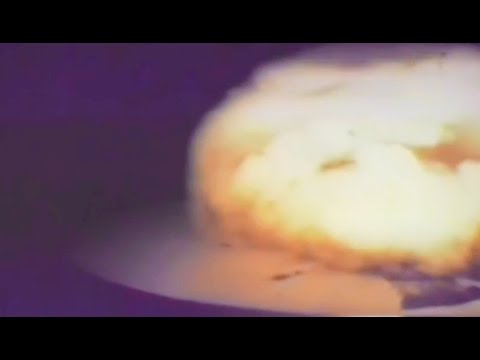Nuclear Weapons & War, Atomic Reactors & Radiation playlist:
more at
Operation Sandstone consisted of the tests of 3 nuclear weapons by the Atomic Energy Commission at Enewetak Atoll in 1948.
Reupload of a previously uploaded film with improved video & sound.
Public domain film from the US National Archives, slightly cropped to remove uneven edges, with the aspect ratio corrected, and one-pass brightness-contrast-color correction & mild video noise reduction applied.
The soundtrack was also processed with volume normalization, noise reduction, clipping reduction, and/or equalization (the resulting sound, though not perfect, is far less noisy than the original).
EG&G, formally known as Edgerton, Germeshausen, and Grier, Inc., is a United States national defense contractor and provider of management and technical services. The company was involved in contracting services to the United States government during World War II, and conducted weapons research and development after the war. Its close involvement with some of the government’s most sensitive technologies has led to its being cited in conspiracy theories related to Defense Department black projects…
In 1931 MIT professor Harold Edgerton (a pioneer of high speed photography) partnered with his graduate student Kenneth Germeshausen to found a small technical consulting firm. The two were joined by fellow MIT graduate student Herbert Grier in 1934. Bernard “Barney” O’Keefe became the fourth member of their fledgling technology group…
Operation Sandstone was a series of nuclear weapon tests in 1948. It was the third series of American tests, following Crossroads and preceding Ranger…
As was the custom, each detonation was given its own code name:
X-Ray 14 April 1948 Engebi Island 37 kilotons
Yoke 30 April 1948 Aomon Island 49 kilotons
Zebra 14 May 1948 Runit Island 18 kilotons
The objectives of the Sandstone series of tests were to:
– test nuclear cores and initiators;
– improve the theory and knowledge of implosion type weapons;
– test levitated cores;
– test composite cores; and
– determine the most economic designs in terms of efficient use of fissionable material.
Levitation meant that instead of being immediately inside the tamper, there would be an air gap between the tamper and the core, which would be suspended inside on wires. This would allow the tamper to gain more momentum before striking the core…
The motivation behind the composite core was to make better use of the available fissionable material… while plutonium was more expensive and harder to produce than uranium-235, it fissions faster, because it makes better use of the neutrons its fission produces. On the other hand, the slower reaction of uranium-235 permits the assembly of super-critical masses, making it theoretically possible to produce weapons with high yields. By July 1945, Oppenheimer and Groves were considering using both materials in a composite core containing 3.25 kilograms (7.2 lb) of plutonium and 6.5 kilograms (14 lb) of uranium-235. The composite cores became available in 1946…
…The X-Ray nuclear device used a levitated composite core. It was detonated on Enjebi just before sunrise at 0617 on 15 April 1948, with a yield of 37 kilotons. The efficiency of utilization of the plutonium was about 35%; that of the uranium-235 was 25% or more. This was somewhat higher than Los Alamos’ prediction…
The Yoke nuclear device used a levitated all-uranium-235 core. It was detonated on Aomon just before sunrise on 1 May 1948 at 0609, a day late due to unfavorable winds… its yield of 49 kilotons made it the largest nuclear detonation up to that time, but it was considered inefficient and wasteful of the fissile material.
Zebra, the third test, and the last of the Sandstone series, was detonated on Runit just before sunrise at 0604 on 15 May 1948… By using one of the B class initiators, it demonstrated that these could still be used with confidence… its levitated uranium-235 core produced a yield of 18 kilotons…
The successful testing of the new cores in the Sandstone tests had a profound effect. Practically every component of the old weapons was rendered obsolete. Even before the third test had been carried out, Bradbury had halted production of the old cores, and ordered that all effort was to be concentrated on the Mark 4, which would become the first mass-produced nuclear weapon…

